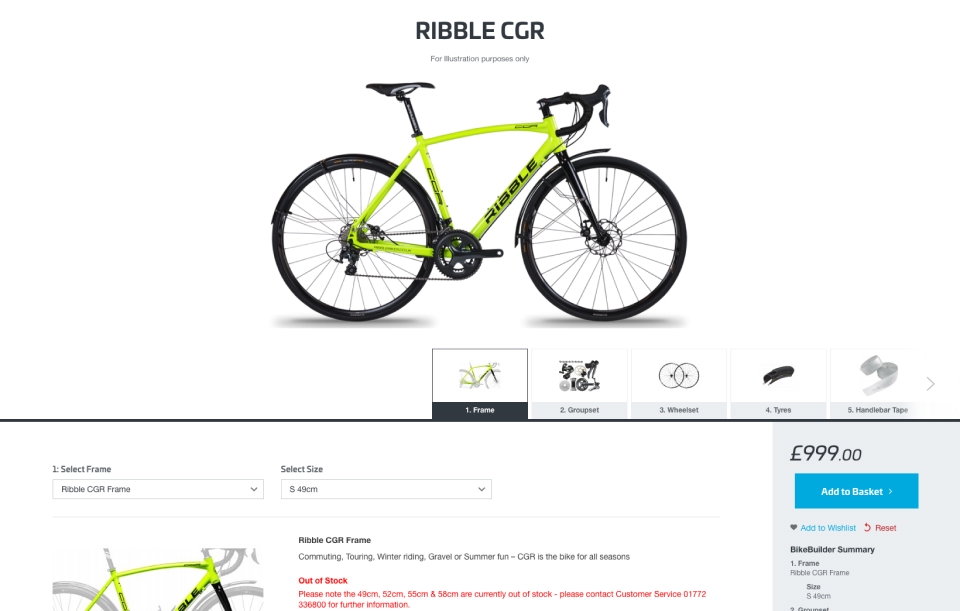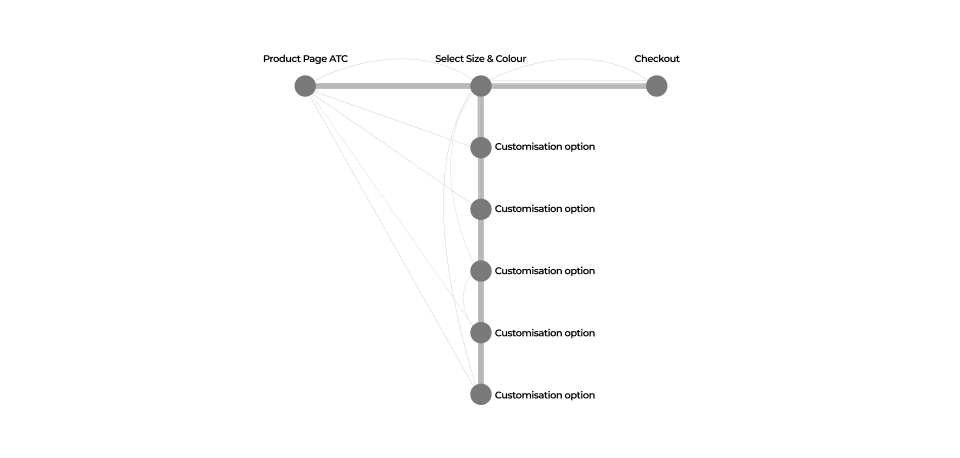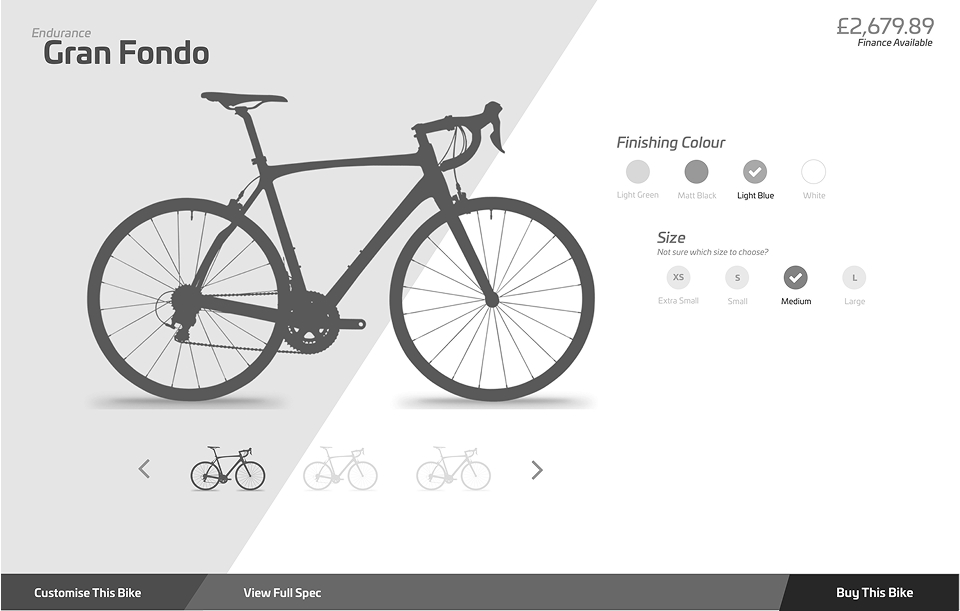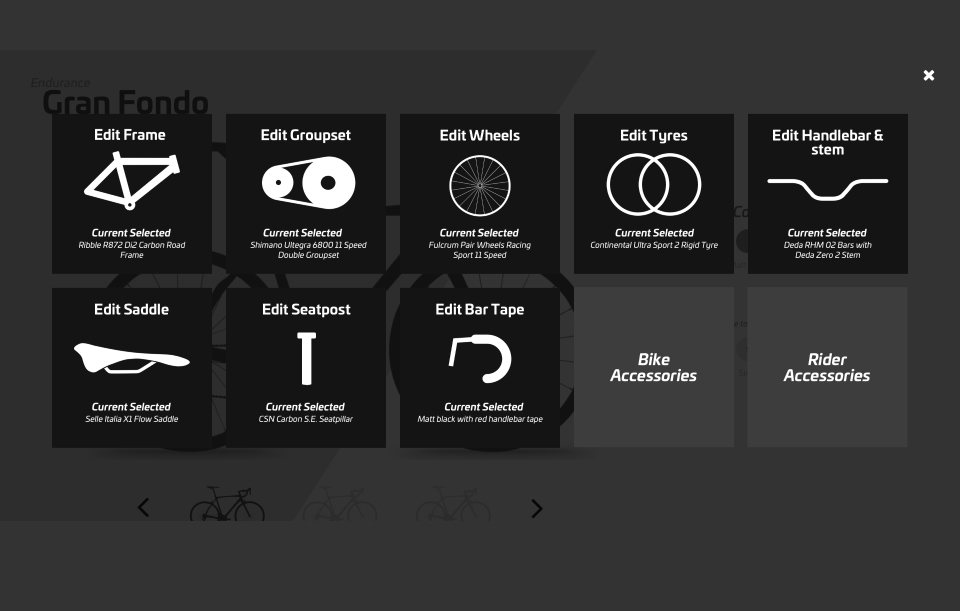Case Study: Ribble Cycles
Who Are Ribble Cycles?
Ribble Cycles are one of the oldest brands in cycling, having been established in 1897.
Their direct to consumer model had led to them having a reputation as a solid, trustworth company for the less novice cyclists to acquire parts and complete bikes at very competitive prices, both through their stores and growing online presence.

After being acquired in 2015, they set about trying to elevate both the offering and brand to a wider audience, whilst simultaneously enhancing their own bike offerings.
I was brought in at the start of 2017 to help that transition both with the branding and the ecommerce experience. The main focus was in three areas; the brand perception, the bike quality and the ecommerce proposition.
My focus was on the ecommerce platform and how we could shift the dated shopping experience to something befitting of a higher end retailer.
BikeBuilder
After an initial revamp of the site, we set about targeting one of the key differentiators that Ribble had over its rivals: custom bike builds. As Ribble are direct to consumers with inhouse bike mechanics, it allowed them the opportunity to give clients a bespoke offering that no other bike brand could offer at this level. They had already a crudely implemented bike builder within the ecommerce platform but the goal was to elevate this offering and bring it to the fore.
We set about deep diving into the current offering. The current iteration allowed you to choose from a select list of parts, frames, saddles and accessories with a minimal compatibility check however relied on at least a solid understanding of the bikes mechanics.

With our goal of trying to make this accessible to all, we set about concepting and ideating ways a user could go through a flow. We didn’t want to remove the low level detail and customisable (we wanted to increase this) but the build should also be accessible to anyone at any ability.
After some initial workshops, we created an array of interactive prototypes to test with clients and a wider audience. With the feedback, we iterated on these concepts. During this process, we came up with what we believed to be the key to unlocking the wider range of accessibility. We called this the T journey.

The T journey allowed a user to select an already perfectly configured bike, where we only needed to know their size and they could checkout. It’s at this point we allowed the advanced users to dive deeper into the bikes configuration and change practically all aspects of their setup to make a fully bespoke model.


